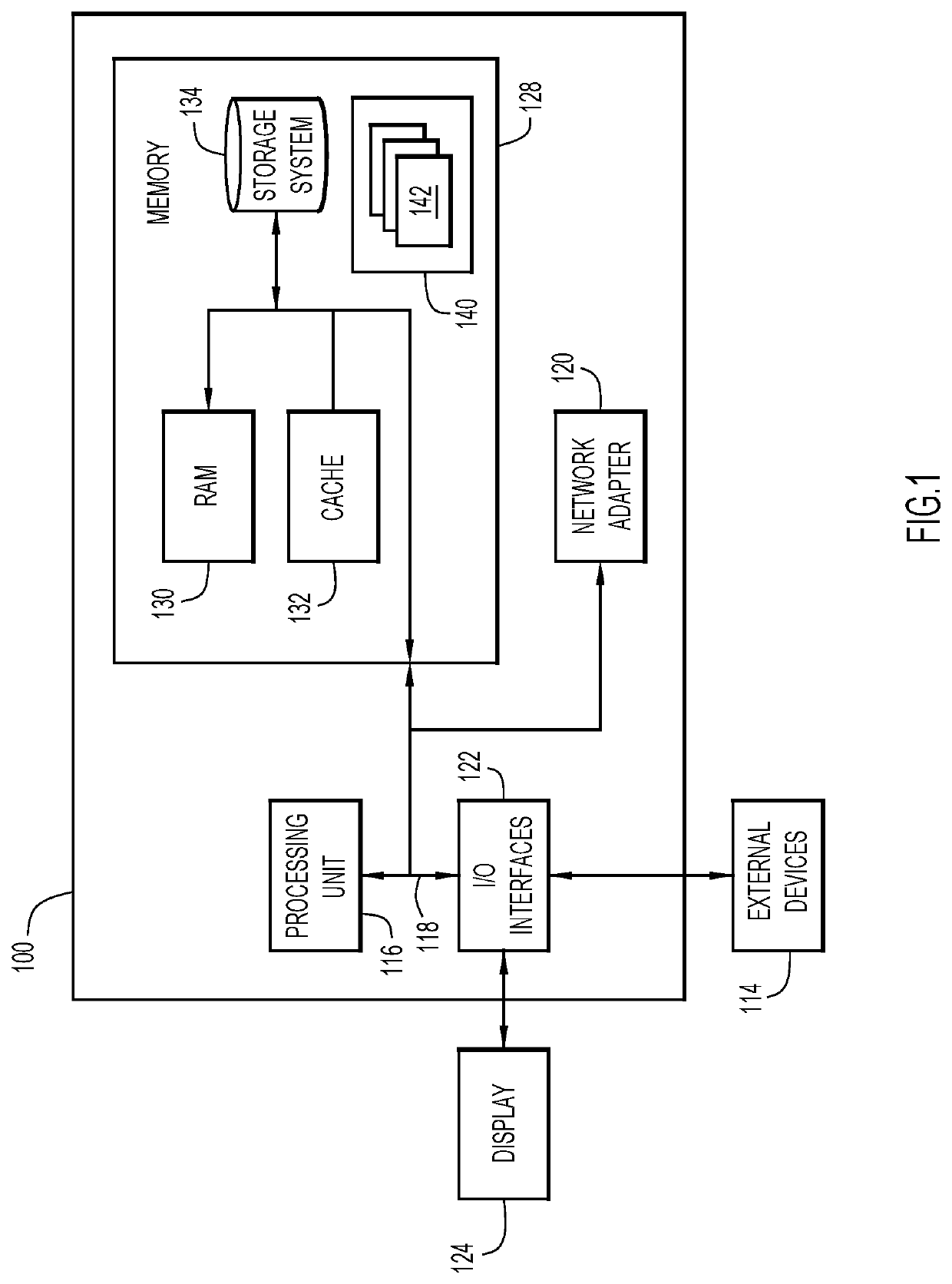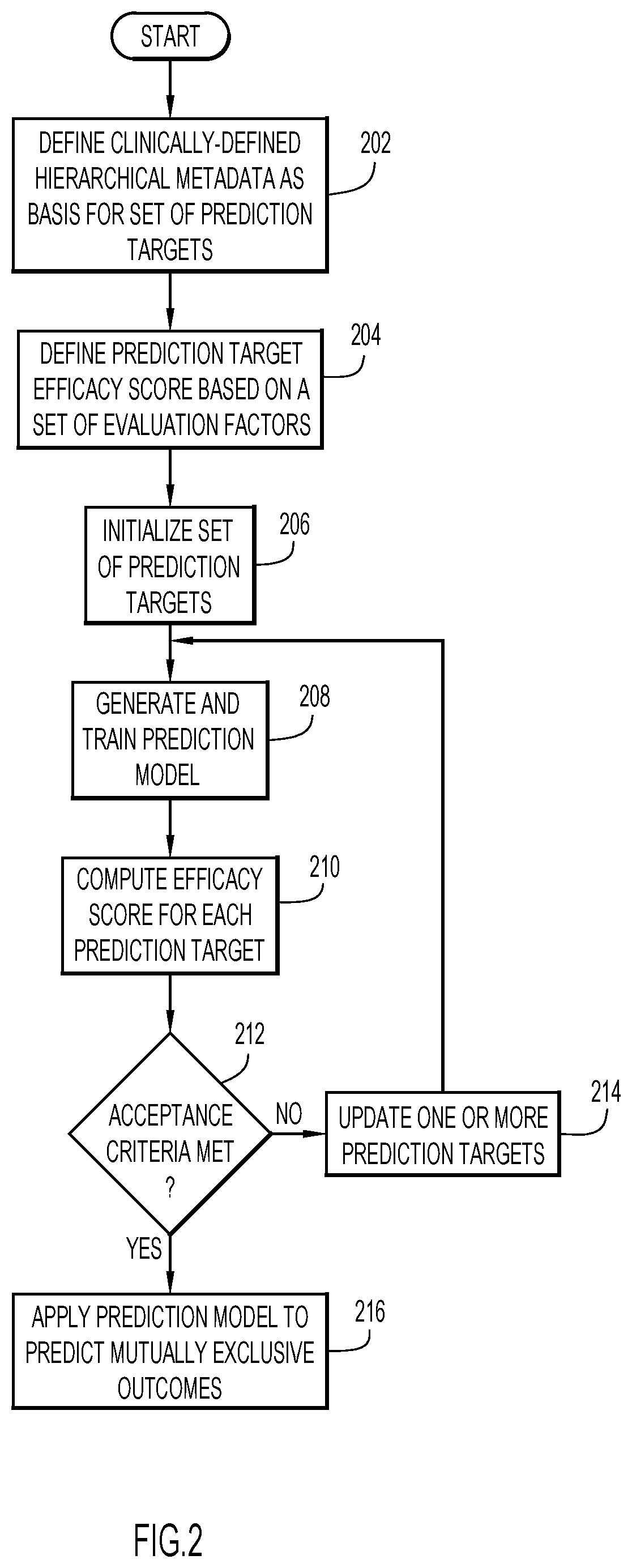Constructing prediction targets from a clinically-defined hierarchy
a technology of hierarchical metadata and prediction targets, applied in the field of mutually exclusive sets of prediction targets from clinically defined hierarchical metadata, can solve problems such as difficult interpretation of prediction results and multi-level predictions, and achieve the effect of simple modeling and easy extension
- Summary
- Abstract
- Description
- Claims
- Application Information
AI Technical Summary
Benefits of technology
Problems solved by technology
Method used
Image
Examples
Embodiment Construction
[0011]Present invention embodiments include methods, systems and computer program products for generating a set of prediction targets at an optimal granularity from clinically-defined hierarchical metadata. Choosing a prediction target at a very detailed level of the clinically-defined hierarchical metadata may not result in a good prediction target for a predictive model because, for example, the prediction target (i.e., diagnosis) may not occur frequently and too few occurrences of the diagnosis may exist in training data to effectively train the predictive model to accurately predict an occurrence of the diagnosis. The set of prediction targets may be mutually exclusive items, or possible outcomes, selected from one or more levels of the clinically-defined hierarchical metadata. Choosing a prediction target at too general a level of the clinically-defined hierarchical metadata may not result in a good prediction target for training a predictive model because the prediction target...
PUM
 Login to View More
Login to View More Abstract
Description
Claims
Application Information
 Login to View More
Login to View More - R&D
- Intellectual Property
- Life Sciences
- Materials
- Tech Scout
- Unparalleled Data Quality
- Higher Quality Content
- 60% Fewer Hallucinations
Browse by: Latest US Patents, China's latest patents, Technical Efficacy Thesaurus, Application Domain, Technology Topic, Popular Technical Reports.
© 2025 PatSnap. All rights reserved.Legal|Privacy policy|Modern Slavery Act Transparency Statement|Sitemap|About US| Contact US: help@patsnap.com



